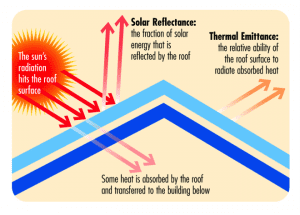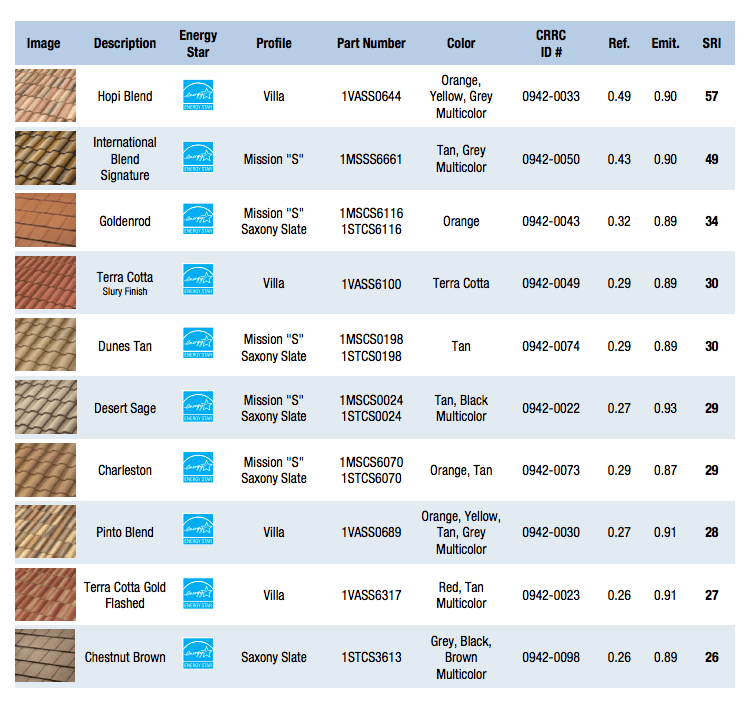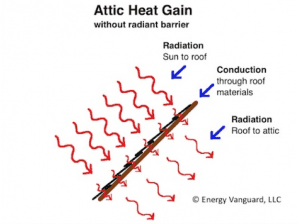If you want a more energy-friendly roof, you can choose either shingle or tile (assuming the structure of the building can accommodate the weight of tile). What's important is that you get what's called a "cool roof."
Before we explain what a cool roof is, we need to explain how your roof choice can increase or decrease your AC costs.
How a Roof Heats Your Home (And Increases AC Costs)
A roof in Phoenix can get as hot as 150°F in the summer! That's bad news because that heat can make its way into your home and increase your energy bills.
Here's how:
- Roof covering (shingles or tile) absorb heat from the sun.
- The heat is passed through the other roof materials (underlayment and decking).
- Objects in the attic (insulation, ducts, etc.) absorb heat from the roof.
- These objects pass the heat into your home.
- Your air conditioner has to run longer to get rid of the heat.
Step 2 is where some say concrete tile roofs have some inherent advantages. They are thicker, which makes heat transfer to the materials below slower. Also, there's an air gap between the tiles and the underlayment, further slowing heat transfer to the attic.
This does probably give tile roofs a slight edge over shingles. However, to make a big difference in the heat gain from your roof, you need to cut the heat off at the pass. That is, stop it at step 1.
And that's where cool roofs come in…
What makes a "cool roof" cool
A cool roof is one that has a high Solar Reflective Index (SRI) score, which generally ranges from 0-100. The SRI is a measure of how well the roof covering rejects heat, as measured by how much the material's temperature rises in direct sunlight.
The higher the SRI of the roof covering, the "cooler" it is and the more it can potentially save on your cooling costs.
The SRI score is determined by 2 factors:
- Solar reflectance
- Thermal emittance
Solar reflectance is the amount of solar energy that is reflected by the roof.

A diagram from the Cool Roof Rating Council showing solar reflectance and thermal emittance.
Solar reflectance is expressed as a decimal and the higher the number, the more energy the roof reflects. In general, the lighter the roof the more solar energy it reflects. However, there are also darker colors with high solar reflectance.
Thermal emittance is the measure of a roof's ability to get rid of the heat before it's transferred to the materials below.

SRI, solar reflectance and emittance of some concrete tile roof options from Boral Roofing.
Summary: How to choose an energy efficient roof in Phoenix or Tucson
So when shopping for a more energy efficient roof, don't worry so much about asphalt shingles vs. concrete tiles. Compare the roofs' SRIs instead.
And if you need help and live in the Phoenix or Tucson areas, contact Lyons. Our friendly roofing consultants would love to help you find the right roof for your home.
Lyons Roofing serves the entire Phoenix and Tucson metropolitan areas.


